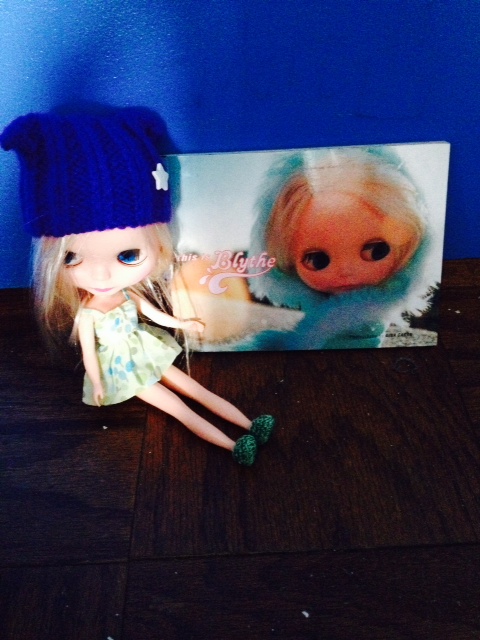The Blythe doll was only alive for one year. First debuted in 1972, the doll featured huge eyes that changed colors when a string at the back of her large head was pulled. Although intended for children, Blythe dolls had many abnormal features, and the dolls didn’t sell very well. A year later, they were discontinued.
Fast-forward to the 21st century. In Japan, the company Takara released Blythe dolls again in 2001. After the dolls reappeared on the market, a new trend towards customizing the dolls surfaced.
The latest Blythe craze is often attributed to Gina Garan, a doll collector from New York. Garan discovered an original Blythe doll and was inspired to take pictures of it. In 2000, her small photo project turned into a book, “This Is Blythe,” that has sold over 10,000 copies. Many Blythe customizers cite Garan’s photographs as their introduction to the doll.
Isabel Perez Torres, a 33-year-old high school art teacher from Spain, first learned about the Blythe doll from Garan’s photographs, which were being used in advertisements for products such as the Sony Walkman in 2001. The ad featured Blythe dolls in urban settings listening to a Walkman.
“I saw that Sony advertisement with a Gina Garan picture in the bus stop,” Torres recalls. “I can remember that I couldn’t stop looking at that Blythe doll!”
Fiona Wilson, a 44-year-old painter from Scotland and a Blythe doll fan, believes Blythe survives through adult collectors and online fan communities.
“The success of Blythe lies in the community that is built around her by the adult collectors,” she says. “Sites such as Flickr, Ipernity, and Facebook allow collectors to share pictures of their dolls across the world, and this fuels their desire.”
It does make sense that Blythe’s current reputation relies strongly on the online community. These dolls aren’t available in many stores, so the Internet is one of the only places to get them. Many doll customizers, like Torres and Wilson, sell their Blythe adaptations on Internet community stores like Etsy and eBay.
These one-of-a-kind dolls are not cheap. On Etsy, prices for the doll range from $200 to over $1,000. But they do sell. Hardcore fans and collectors are willing to pay the costly amount to get the doll they want.
While paying such a high price for a customized doll may sound unreasonable, the customization of these dolls takes time and skill. Just about everything on the doll can be altered—the faceplate, eyes, hair, even its arms. The customizable parts can also be found on eBay and Etsy, along with original handmade doll clothing.
When creators first begin customizing Blythe dolls, they use cheaper Blythe knock-offs in case the finished product didn’t turn out as expected.
“Finding out about all the techniques and materials wasn’t easy and I’ve had a few dolly disasters along the way, but it’s such an enjoyable creative hobby,” says Eve Parsons, 27, a British fan who began customizing Blythe dolls in 2012.
The Blythe doll has also had mainstream success in America. In 2009, fashion designer Alexander McQueen used Blythe dolls in an ad campaign for his Target collaboration clothing line. Hasbro, who purchased Kenner, Blythe’s original manufacturer, began re-releasing mini Blythe dolls as part of their Littlest Pet Shop toy line in 2010.
BlytheCon, an annual Blythe doll convention, took place this year on October 13. The sold-out event was held in the Hell’s Kitchen area of Manhattan this year. The event included vendors from around the world selling their unique Blythe dolls and clothes, contests, and even goodie bags.
“Blythe was released before her time,” says Carla Pacheco, a 35-year-old Blythe customizer and illustrator from Portugal. “Nowadays the aesthetic context is different [than it was in the 1970s].”
Pacheco’s argument may explain why the doll’s eerie beauty has recently captured the attention of so many people around the world. With other big-head dolls, such as Diva Starz and Bratz, which became mainstream since Blythe’s re-release, this doll style is no longer only deemed bizarre.
Of course, the many people who love to hold on to their childhood are a large factor in Blythe’s resurged popularity.
“There are a lot of little girls who became older and never stopped loving dolls,” says Marta Puente, another Blythe customizer from Spain. “This [customization] is a more mature way to love them.”
Born and raised in New York City, Rafaella (Raffi) is majoring in Journalism + Design at Lang. Rafaella also enjoys fashion, writing poetry, reading for pleasure, the art of drag, and listening to pop-punk!








Leave a Reply